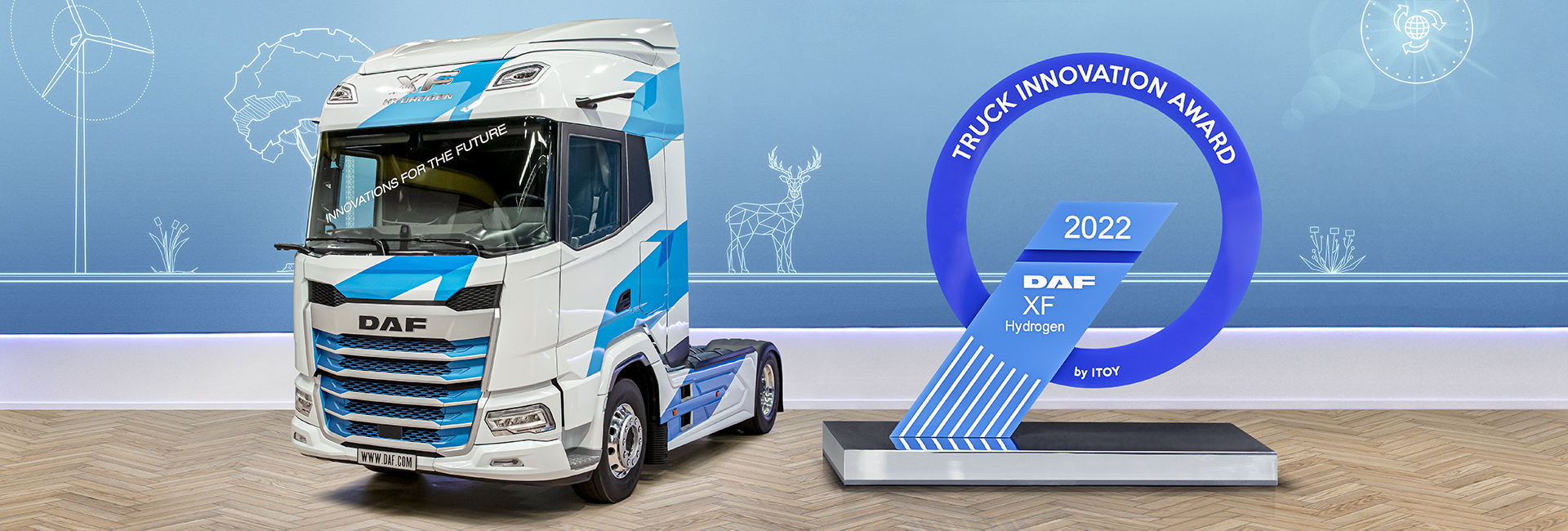
Hydrogen
An interesting option for the future
The philosophy of DAF is that we need to explore all technologies on the road to sustainable road transport. And hydrogen (H2)? Hydrogen-powered trucks are certainly a promising alternative in the long term, especially for medium and long distances. There are even two options: the first in which a fuel cell uses hydrogen to generate electricity to drive the electric motor, and secondly where hydrogen is used directly as fuel for the hydrogen engine. In both cases, CO2 can be reduced by 100%.
Comprehensive experience with hydrogen
DAF’s parent company PACCAR has already gained a lot of experience (in cooperation with Toyota and Shell) with trucks with hydrogen technology , that utilize a fuel cell. Extensive testing has been done in recent years in and around the Port of Los Angeles.
PACCAR and Toyota Motor North America, Inc. (Toyota) have even announced an expansion of their joint efforts for the development and production of zero-emission Kenworth and Peterbilt trucks with hydrogen fuel cells (FCEV).
Hydrogen Engine
DAF is also focusing on the further development of hydrogen technology. A great example is the New Generation DAF XF with hydrogen internal combustion engine (ICE), which was honored with the prestigious 'Truck Innovation Award 2022'.
Compared to the use of hydrogen for fuel cells, the internal combustion solution requires less cooling capabilities and eliminates the need for batteries to generate electricity. Additionally, the hydrogen combustion engine is less sensitive to hydrogen quality. By utilizing hydrogen directly as fuel, we can fully leverage the proven efficiency, reliability, and longevity of the internal combustion engine. Furthermore, it's important to recognize the extensive knowledge and expertise we have in Europe regarding development and production in this field.

There are several ways to produce hydrogen. First, by ‘cracking’ fossil fuels. The result is called grey hydrogen because CO2 is always released when fossil fuels are processed. A second and much cleaner way to create hydrogen is by electrolysis. Electricity is generated from renewable sources (using solar or wind) that are passed through water to produce oxygen and hydrogen: green hydrogen for a 100% CO2-free carbon-free ‘well-to-wheel’ solution

